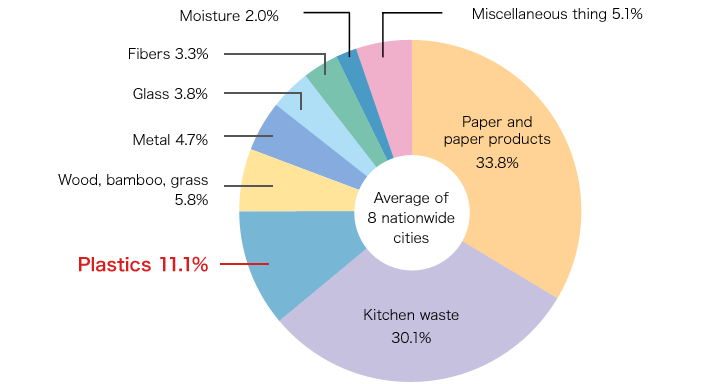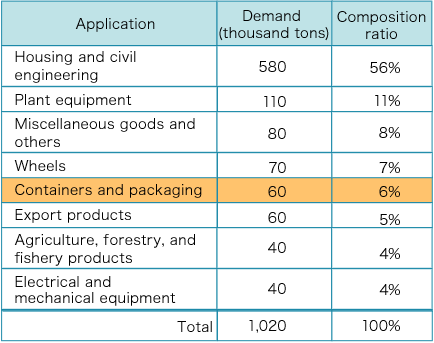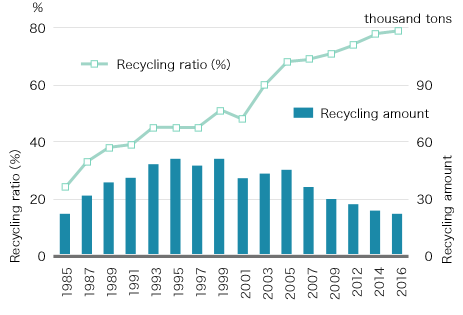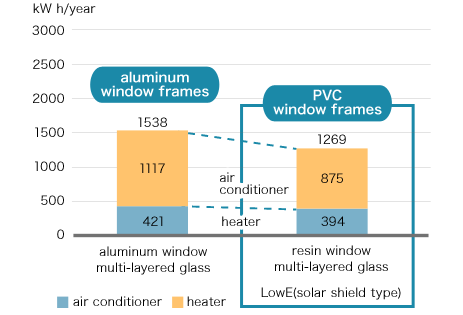Current status of plastic disposal in Japan
Current status of plastic disposal in Japan
Amount of plastic waste
The FY2017 survey by the Ministry of the Environment on the Use and Disposal of Containers and Packaging Waste shows that of 43,170 thousand tons of general waste produced a year, plastic waste accounted for 4,790 thousand tons (11.1%).
Source: Plastic Waste Management Institute (PWMI) "An Introduction to Plastic Recycling 2018"
Composition of garbage discharged at garbage stations (percentage wet weight)

Survey target:
For each of 8 cities (Tohoku: 1, Kanto: 4, Chubu: 1, Kansai: 1,Kyushu: 1), household garbage was discharged in 3 types of districts having the following characteristics.
District A: relatively old residential district of detached houses;
District B: recently developed residential district of detached houses;
District C: apartments.
Survey period :
August 2017 ~ December 2017
Source: Ministry of the Environment. Use, discharge fact-finding of waste containers and packaging discharged (FY2017)
Recycling of Polyvinyl Chloride (PVC)
The total amount of waste plastic emissions including industrial waste in Japan in 2017 was 9,030 thousand tons per year, of which the amount of PVC waste was 680 thousand tons per year (7.5%).
Total recycling amount(2017, domestic)

86% of waste plastic in Japan is recycled by one of three methods: "material recycling," "chemical recycling," and "thermal recycling."
Material recycling amount(2017, domestic)

Material recycling is a method where waste plastics are reprocessed into similar or different plastic products.
Regarding used PVC, 310 thousand tons per year (46%) is recycled through material recycling.
Source: Plastic Waste Management Institute "The Status of Production, Disposal, Recycling and Processing of Plastics 2017—Material Flowchart"
Polyvinylchloride (PVC) applications
Use and service life of various plastics(2011, domestic)1

PVC products are characterized by their long product life span. For example, the quality of PVC water and sewage pipes hardly deteriorates even after 50 years. More than 60% of PVC products have a useful life of 15 years or more.1
Demand Composition of PVC by Industry Sector(2016, domestic)2

Of PVC applications, 60 thousand tons are used for containers and packaging, which is drawing attention for the ocean-plastics pollution problem.2
1 Source: Data compiled by Vinyl Environmental Council (VEC) based on the Current Survey of Production of the Ministry of Economy, Trade and Industry.
2 Source: Vinyl Environmental Council. Web site
Case studies of environmental measures for Polyvinylchloride (PVC)
Changes in material recycling of agricultural PVC products3

We are continuing our efforts to improve the recycling rate of PVC.
(Data created by VEC based on statistical data of the Ministry of Agriculture, Fisheries and Food)
Energy-saving effect of resin (PVC) window frames4

The use of PVC window frames can reduce power consumption from air conditioning by approximately 20% compared with aluminum window frames4 carbon dioxide emissions are expected to be reduced by more than 100 kg annually per house.5
(Assuming that the solar shield type of low-E (low-emissivity) glass is used to prevent sunlight in summer.)
3 Source: Vinyl Environmental Council. Web site
4 Source: The 13th Meeting of the Institute of Life Cycle Assessment, Japan with the theme "Life Cycle Assessment of Resin Window Frames and Greenhouse Gas (GHG) Emission Reduction Contribution"
5 Source: Emissions are calculated using the CO2 emission factors provided by TEPCO through its report on "CO2 emissions, CO2 emissions per basic unit and electricity sales."



